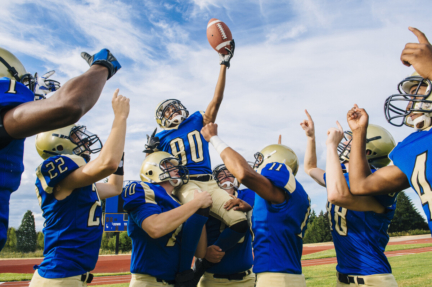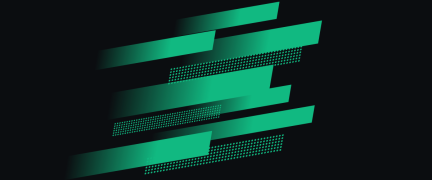The landscape of college athletics has undergone a dramatic shift. A patchwork of state regulations now governs how student-athletes can profit from their name, image, and likeness. This new era has created a complex environment with significant disparities.
Without uniform federal legislation, the rules change depending on location. This means athletes in some states have broader compensation rights than those in other regions. The core tension between amateur status and personal profit continues to reshape the competitive field.
This uneven playing field affects more than just individual earning potential. It influences recruitment strategies and places varying compliance burdens on institutions. The entire balance of competition across conferences is at stake.
Our resource hub is designed to help you navigate this complex intersection of state policies and NCAA guidelines. We provide clear insights to empower athletes, institutions, and their communities. Understanding these dynamics is crucial for making informed decisions.
Key Takeaways
- State-level regulations create significant disparities in opportunities for student-athletes.
- The absence of a single federal standard leads to a fragmented and confusing system.
- Recruitment and competitive balance across college sports are significantly affected.
- Institutions face complex compliance challenges due to varying state rules.
- Understanding these policies is essential for athletes to maximize their personal brand value.
- This guide provides a foundation for navigating the current collegiate athletics environment.
Introduction to the Evolving NIL Landscape
A new era has dawned for student-athletes seeking to benefit from their personal brands. The traditional model of amateurism in collegiate athletics has undergone significant transformation. We now explore how these changes came about and what they mean for the future.
Historical Background and Recent Changes
For decades, the NCAA maintained strict rules against athletes profiting from their name and image. This approach preserved amateurism but limited opportunities. The system remained largely unchanged until external pressures mounted.
In January 2021, the NCAA postponed a crucial vote on NIL rule changes. This delay created uncertainty across college athletics. Then the Supreme Court’s Alston decision in June 2021 changed everything.
The Court’s ruling pressured the NCAA to act swiftly. On June 30, 2021, the organization approved an interim policy. This allowed all student-athletes to profit from their personal brands.
The Role of State and Federal Initiatives
States began creating their own frameworks as federal legislation stalled. This patchwork approach led to varying rules across different regions. Some states offered more generous terms for athletes than others.
The interim policy remains in effect while Congress debates comprehensive federal legislation. This creates ongoing uncertainty for institutions and athletes alike. We help you understand these complex dynamics.
These parallel tracks of state and federal action have shaped today’s environment. The balance between athlete rights and traditional structures continues to evolve.
Understanding NIL Laws and Their Impact
The ability for student-athletes to profit from their personal brand hinges on understanding two critical components: fundamental definitions and state-level differences. We break down these complex concepts into clear, actionable information.
Defining Terms: Name, Image, and Likeness
Your name, image, and likeness represent your commercial identity. This trio forms the foundation of your personal brand. It grants you control over how others use your persona for profit.
Compensation opportunities are diverse. Student-athletes can earn through social media promotions, autograph sessions, and personal appearances. Licensing your image for products represents another valuable avenue.
How State NIL Laws Differ Across the US
Thirty-two states have enacted legislation to date. Most frameworks draw inspiration from California’s pioneering Fair Pay to Play Act. However, significant variations create an uneven landscape.
Common provisions exist across many states. Athletes may use professional representation like agents. They must disclose contracts above certain values. Agreements cannot conflict with team obligations.
Some states offer broader protections. Oregon uniquely includes “athletic reputation” in its definition. This expansion creates more compensation possibilities for student-athletes there.
| State | Key Provision | Disclosure Requirement | Unique Feature |
|---|---|---|---|
| California | Professional representation allowed | Mandatory for all contracts | First state to enact legislation |
| Texas | No school approval required | Above $5,000 value | Prohibits conflicting categories |
| Florida | Full compensation rights | To designated official | Explicit social media rights |
| Oregon | Includes athletic reputation | All agreements disclosed | Broadest definition of NIL |
Knowing your state’s specific provisions is essential. This knowledge helps maximize earning potential while maintaining compliance. Your location strongly influences the compensation opportunities available to you.
Federal vs State NIL Regulations: A Comparative Analysis
Congressional gridlock has forced states to develop their own frameworks for athlete compensation. This creates a complex landscape where proposed federal solutions compete with existing state regulations. We examine this critical divide and its impact on collegiate athletics.
Key Federal Bills and Legislative Efforts
Multiple federal proposals have emerged from both parties since 2019. The Student-Athlete Level Playing Field Act represents one bipartisan attempt. Senator Rubio’s bill and the College Athletes Bill of Rights offer alternative approaches.
Despite repeated introductions, these measures have gained little traction. The current status remains uncertain as debates continue. This legislative stagnation maintains the patchwork system.
State-Specific Regulatory Frameworks
Thirty-two states have enacted their own compensation rules. These frameworks vary significantly in their provisions and effective dates. Some states offer broader protections than others.
Attorneys note this creates a dual compliance burden. Athletes in states with active legislation must follow both state and institutional policies. Those in states without specific rules follow only campus guidelines.
This uneven practice advantages athletes based solely on geographic location. The need for standardized national standards becomes increasingly clear. We help you understand these complex dynamics.
Impact on College Athletes and Higher Education Institutions
Collegiate sports programs now navigate a complex dual role as both educational institutions and business facilitators. This transformation affects everyone involved in college athletics.
Opportunities for Student-Athletes
Student-athletes today enjoy unprecedented earning potential. They can secure endorsement deals and monetize social media followings. Many host camps and clinics to share their expertise.
The April 2024 NCAA amendment allows institutions to provide services for identifying opportunities. However, schools cannot require athletes to use these services. This preserves athlete independence while providing resources.
State regulations provide crucial protections. Institutions cannot revoke scholarships due to compensation earnings. Athletes maintain commercial rights outside official team activities.
Challenges for Schools and Athletic Associations
Educational institutions face significant compliance burdens. They must track contracts and disclosures across multiple regulatory frameworks. This requires dedicated resources and specialized staff.
Athletic departments struggle with competitive balance concerns. Recruiting advantages now favor programs in states with favorable regulations. This creates uneven playing fields across conferences.
Schools must educate hundreds of athletes about varying requirements. They balance creating opportunities for athletes with maintaining institutional compliance.The administrative workload has increased substantially.
These challenges require new administrative structures and third-party partnerships. The fundamental practice of collegiate athletics continues to evolve rapidly.
Legal Considerations and Compliance Challenges
Navigating the legal framework for athlete compensation requires understanding multiple regulatory layers. Institutions and athletes must balance NCAA guidelines with state provisions.
The NCAA maintains core prohibitions against pay-for-play arrangements. These rules prevent compensation that is linked to athletic performance. They also ban using agreements as recruiting inducements.
Guidance from NCAA and Legal Precedents
Recent developments have created significant compliance challenges. The May 2022 Third-Party Guidance classified collectives as boosters. This initially restricted their recruiting activities.
A federal court injunction in February 2024 suspended these restrictions. The Tennessee and Virginia lawsuit fundamentally altered enforcement capabilities. This created new uncertainties for athletic programs.
Institutional Policies vs. State Legislation
Schools now face tension between their internal policies and state regulations. Some states offer broader rights than NCAA rules allow. This conflict creates complex compliance obligations.
Working with attorneys has become essential for navigating contracts. Legal professionals help ensure adherence to multiple regulatory frameworks. They protect athlete rights under applicable law.
| Compliance Aspect | NCAA Requirement | State Variations | Institutional Duty |
|---|---|---|---|
| Disclosure Threshold | Agreements exceeding $600 | Some states have no minimum | Establish reporting procedures |
| Third-Party Involvement | Boosters restricted from recruiting | State rules may be more permissive | Monitor collective activities |
| Contract Review | Must not conflict with team obligations | Some states provide additional protections | Provide legal review services |
| Educational Resources | Develop comprehensive materials | State-specific guidance required | Implement training programs |
The April 2024 amendment to Bylaw 22.2 formalized disclosure requirements. Institutions must now provide services only to compliant athletes. This creates additional monitoring responsibilities for athletic departments.
Case Studies: How Different States Approach NIL Laws
Real-world examples from California and Oregon demonstrate how legislative differences create competitive advantages. These states represent opposite ends of the regulatory spectrum.
California’s Fair Pay to Play Act Case
California’s groundbreaking legislation forced the NCAA’s hand in 2021. This pioneering state nil law established the template most others followed. It fundamentally challenged traditional authority structures.
The legislation demonstrated that state-level action could successfully protect athlete rights. California’s approach created pressure for broader policy changes nationwide. This first-mover status influenced thirty-one subsequent state frameworks.
Oregon’s Progressive NIL Legislation
Oregon’s approach has evolved through three significant amendments since 2021. The most recent update in March 2024 expanded protections considerably. House Bill 4119 uniquely includes “athletic reputation” as compensable.
This progressive legislation prohibits institutions from restricting athlete rights. It explicitly permits deals that conflict with institutional contracts. However, athletes cannot perform these activities during official team activities.
Oregon’s framework requires royalty payments for commercial product use. Entities producing team jerseys or video games must compensate each athlete. This provision creates additional revenue streams beyond most state laws.
The legislation protects both athletes and institutions from NCAA interference. This balanced approach maintains the school’s educational mission while maximizing opportunities. Oregon’s status represents one of the most comprehensive state nil frameworks available.
What’s Next: Evolving Policies and Industry Implications
As the compensation landscape evolves, new challenges and opportunities emerge for all stakeholders. The current system remains in flux with ongoing legal developments.
Anticipated Federal Legislative Changes
Federal intervention could establish uniform national standards. This would replace the current patchwork of state regulations. The House settlement may significantly reshape compensation structures.
Some states have repealed their own legislation, viewing restrictions as competitive disadvantages. Others continue refining existing frameworks through amendments.
Long-term Impacts on Collegiate Athletics
Institutions are adapting strategies by investing in infrastructure and professional staff. They must build flexible compliance systems to enable athlete activities.
Court decisions have limited enforcement authority, opening new possibilities for representation. The relationship between athletes and their schools continues to transform.
Technological advances create novel opportunities that current policy may not address. Staying informed about legislative changes remains essential for all parties.
Conclusion
Ultimately, the current compensation framework reveals a system where location dictates opportunity. Geographic disparities create an uneven playing field that advantages some student athletes while limiting others. This reality underscores the need for greater uniformity.
Despite these challenges, the recognition of athletes’ rights to benefit from their personal brands represents meaningful progress. Understanding your specific state regulations and institutional policies remains essential for maximizing opportunities while maintaining compliance.
The landscape continues evolving with ongoing litigation and potential federal action. We remain committed to providing authoritative guidance that helps you navigate this dynamic environment with confidence. Your informed decisions today will shape tomorrow’s opportunities.
This transformative era empowers student competitors like never before. While inconsistencies persist, the foundation for fairer compensation structures is being built. Continued advocacy will drive positive changes for future generations of collegiate athletes.
FAQ
What is the primary difference between state and federal name, image, and likeness regulations?
The main distinction lies in scope and uniformity. State-specific legislation creates a patchwork of rules that vary by location, affecting student compensation differently across the country. Federal proposals aim to establish a single, national standard to level the playing field for all collegiate athletes and institutions.
How do institutional policies interact with existing state legislation?
Schools must develop their own internal policies that comply with their state’s legal framework. These institutional rules often provide specific guidance on contract review, permissible activities, and disclosure requirements, ensuring athletes operate within both campus and legal boundaries.
Can a student-athlete’s team participation status be affected by their compensation agreements?
Yes, certain agreements could impact eligibility if they violate specific state laws or institutional policies. It’s crucial for athletes to ensure their representation and contracts align with all compliance requirements to maintain their status in college athletics.
What role do attorneys play in the name, image, and likeness process for student-athletes?
Legal professionals provide essential guidance on contract negotiation, rights protection, and regulatory compliance. They help athletes navigate complex legislation and ensure their compensation agreements are legally sound and beneficial.
How are educational institutions adapting their athletic programs to these new compensation rules?
Colleges are implementing comprehensive education programs, hiring compliance officers, and developing internal monitoring systems. These measures help student-athletes understand their rights while ensuring the school meets all legal obligations under current legislation.
What should a student consider before entering into a compensation agreement?
Athletes should evaluate the agreement’s terms, potential conflicts with team activities, and any institutional approval requirements. Consulting with their school’s compliance office and seeking professional representation ensures the contract aligns with their long-term interests.






Leave a Comment